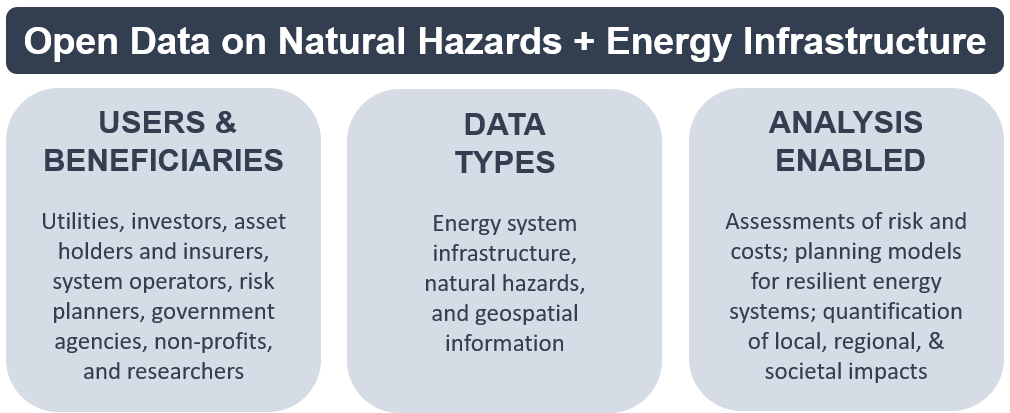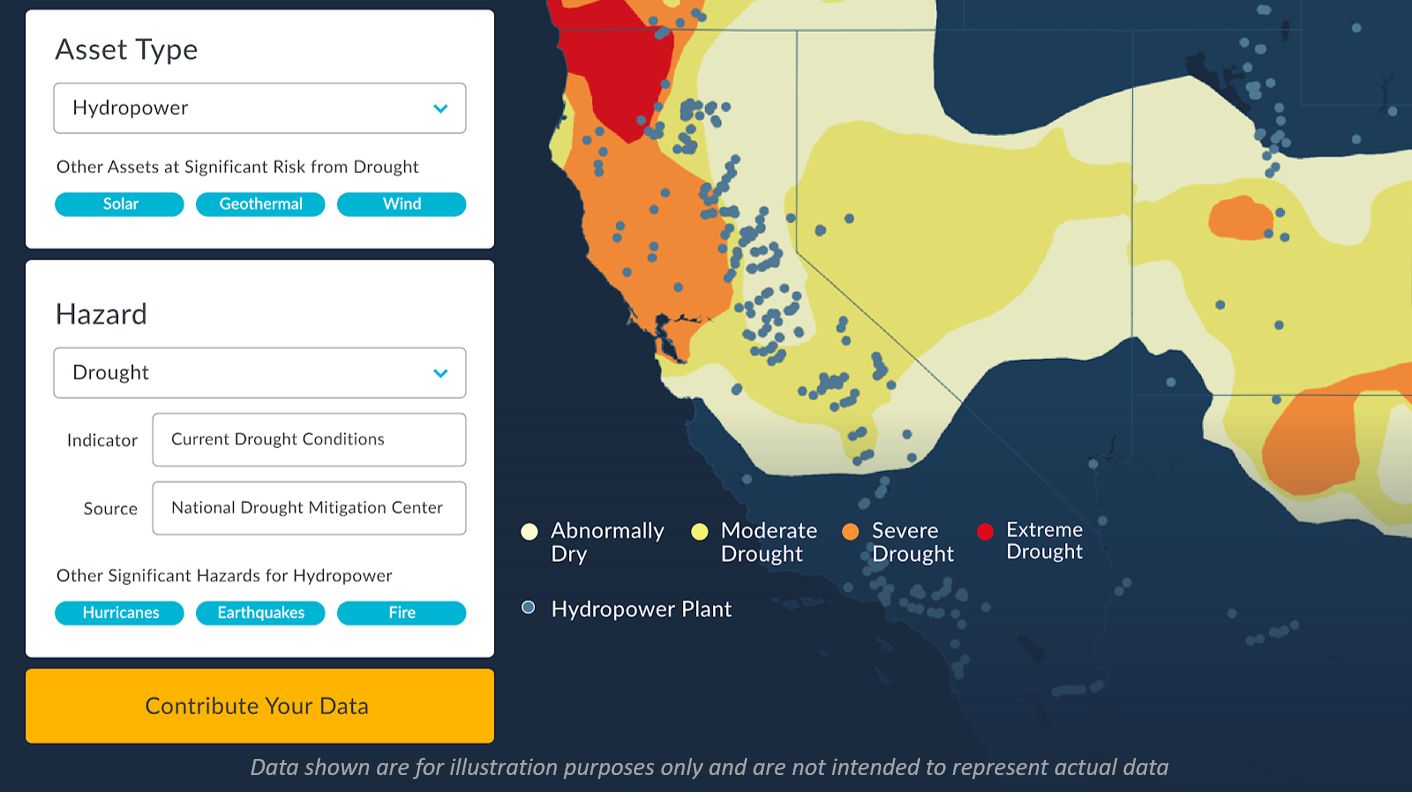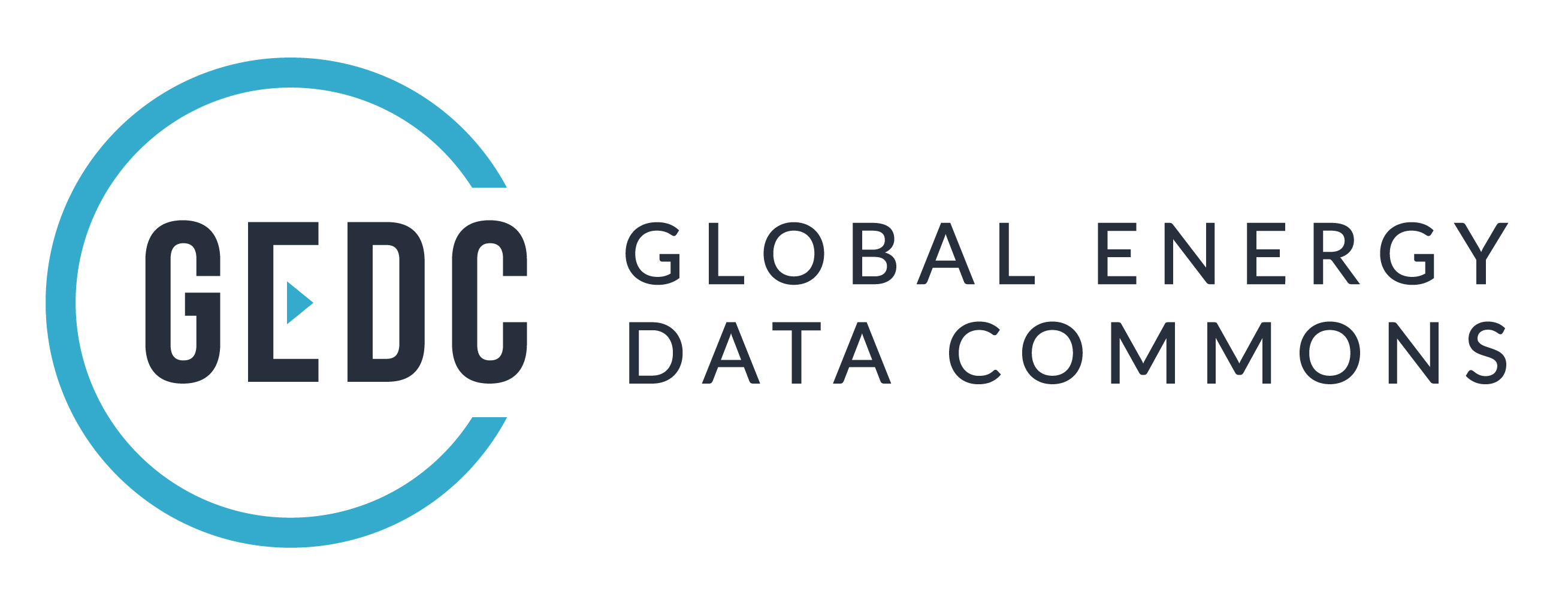The Global Energy Data Commons (GEDC) is a partnership that seeks to make it easy to access and analyze natural hazards data for energy systems to support a more resilient energy future. It will develop a web-based open platform and establish a community around resilient energy systems.

Funded by a National Science Foundation Convergence Accelerator Phase I scoping grant, this project established a working group to create an open knowledge network that will 1) catalog open data sources, 2) identify effective modes to enable data interoperability, and 3) evaluate automated data collection methods – including machine learning approaches. We are currently seeking Phase II implementation funding to build the GEDC. To learn more about our project’s Phase I scoping and funding details, see here.
What differentiates the GEDC and brings value? The GEDC has a user-centered approach informed by interviews with dozens of organizations, will include innovative AI-based data collection methods, a cutting edge visualization platform, and guidance on how to use the data effectively. The partnership brings together leading organizations in computer science, data science, and artificial intelligence with experts in energy system operations and planning, engineering, economics, earth science, and climate science.
Partners: Duke University | World Resources Institute | Electric Power Research Institute | National Renewable Energy Laboratory | Purdue University
GEDC Web-Based Platform Concept

E-Update Archive:
Outcomes and Resources
- Journal Publications:
- Streltsov, A., Malof, J. M., Huang, B., & Bradbury, K. (2020). Estimating residential building energy consumption using overhead imagery. Applied Energy, 280, 116018. (Link)
- Conference Papers and Presentations:
- Hu, W., Alexander, B., Cathcart, W., Hu, A., Nair, V., Zuo, L., Malof, J. M., Collins, L., and Bradbury, K. (2020). Mapping Electric Transmission Line Infrastructure from Aerial Imagery with Deep Learning. In IGARSS 2020-2020 IEEE International Geoscience and Remote Sensing Symposium (pp. 2229-2232). IEEE. (Link)
- Presentation on the GEDC by Johannes Friedrich at the Open Energy Modelling Workshop – Berlin 2020 (Link)
- Presentation on an Analysis of the Open Energy Data Landscape Open by Trey Gowdy at EPRI AI and Electric Power Summit – Virtual 2021 (Link)
- Websites:
- Power Sector Profiles web pages on WRI’s Resource Watch platform serve as a hub for broadly understanding how power sector and other energy data intersect with other kinds of datasets, including natural hazard data. (Link)
- Resources:
- Our team compiled the following lists of existing energy databases, platforms, and datasets. If you have suggested items to add to our list, please see our Contact Form below.
- Energy Data Supply Inventory: Inventory and categorization of energy-related databases, datasets, interactive maps, and tools
- Energy Platform Inventory: Inventory and categorization of energy-related data platforms
Contact
We’re eager to learn from you & your organization and keep you updated on our project’s progress. Please complete this form to:
- Get email updates tracking project progress and sharing new resources we discover (see past updates above);
- Recommend data sets or data platforms we should include in our inventories;
- Suggest data use cases we should consider;
- Discuss collaboration or partnership ideas; and/or
- Share feedback and questions.

